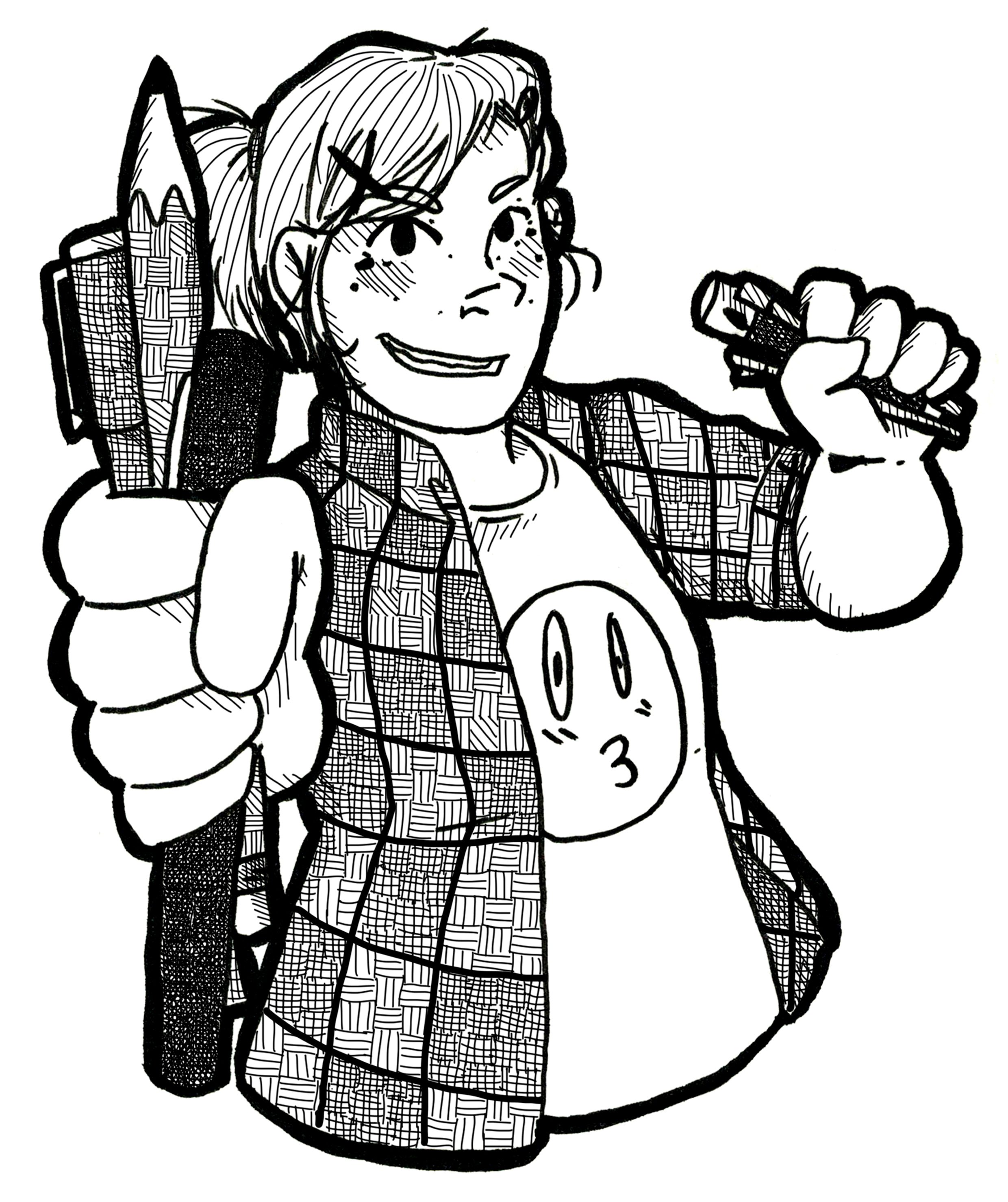
Last week me and my brother attended the On Shaky Ground event at the At-Bristol Science Centre (Twitter). It was an event for home-educated young people led by a woman called Kathy about earthquakes, how they are caused and how engineers and architects design earthquake-resistant buildings.
We began the day with Kathy explaining to us how earthquakes can happen, the consequences of earthquakes and how engineering can help. First she explained how the Earth is made from a central core surrounded by a layer of liquid magma, and above that floats the top layer called the crust, which is made up of several tectonic plates. When the plates move against each other or the pressure is released from below it creates a seismic wave, which we also call an earthquake. Kathy explained that earthquakes can be measured using a seismograph and that there are three different kinds of seismic waves: P-waves, S-waves and surface waves.
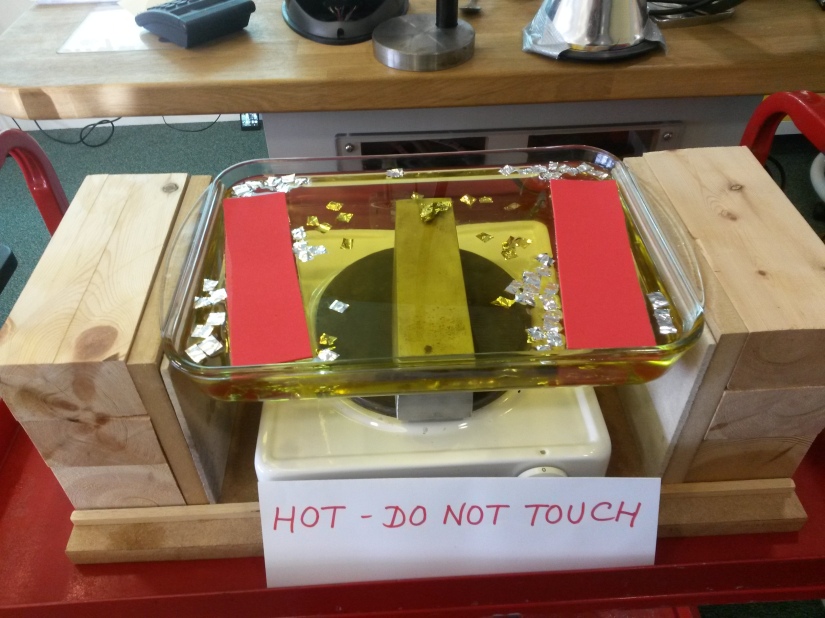
Next Kathy talked about the consequences of earthquakes. One of the most interesting facts she told us was that around a million earthquakes happen every year but most are not felt by humans. However, some earthquakes are strong enough to cause landslides, liquification, tsunamis and land ruptures. Kathy explained that everything has a resonating frequency and if an earthquake has the same frequency as a building the building can be damaged or even fall completely. She told us that ‘brown sound’ is a frequency that resonates with a human’s bowels and can make them poo themselves!
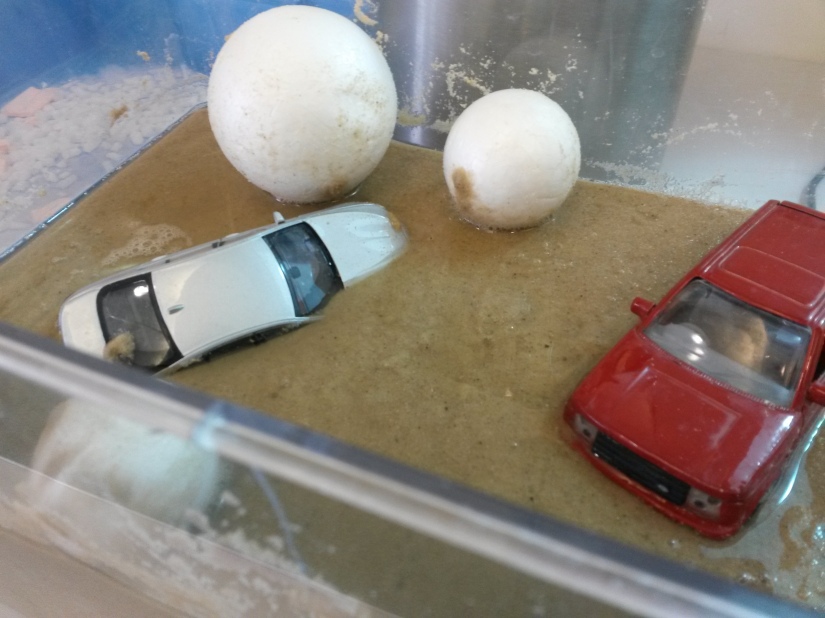
Kathy said we can’t predict or prevent earthquakes but we can design earthquake-resistant buildings with clever engineering. We split into teams to plan and build earthquake-resistant water towers. We were given a budget of £100 (fake!) to spend on materials for our towers, such as paper straws and string, and we had one and a half hours to finish our buildings. Our buildings also had to be a certain height and as water towers had to be able to hold some weight, and we had to plan them out before trying to build them. Kathy gave us this advice:
- Keep it simple (e.g symmetrical)
- Avoid changes in stiffness (changes in material)
- Avoid local weak points (changes in load transfer plants)
- Keep mass central (if mass is on one side it can cause twisting or falling)
- Reinforce joints
- Strong columns and weak beams
- Use horizontal load bearing shapes (triangles are strong shapes)
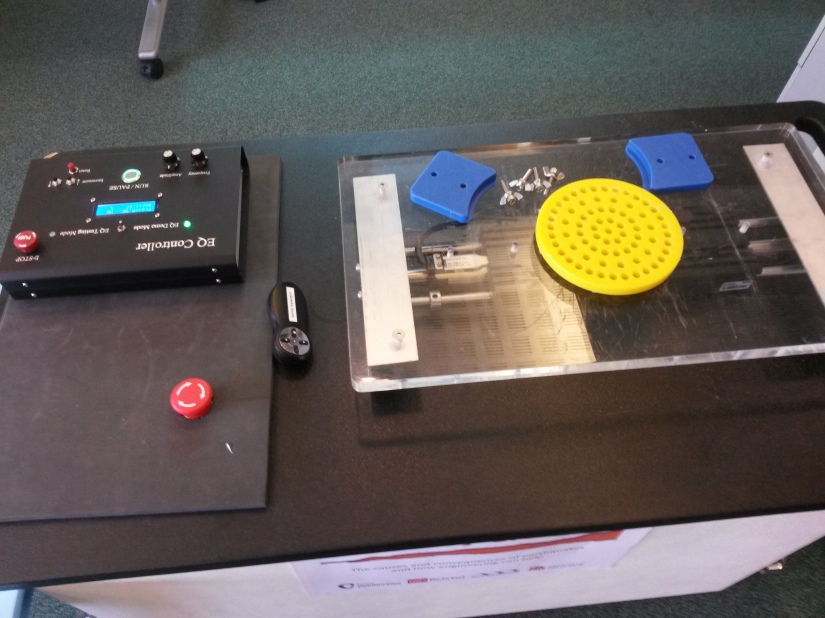
My team was called ‘Igloo’ and was made of me, my brother J, and a friend we made that morning, L. We talked about the tips Kathy gave us. At first we thought about a pyramid shaped building but decided against it because it wouldn’t be able to support the weight at the top. Instead we chose to design a building with a cylindrical external shape with a square core support inside. We chose this because one of the tips on the cards we were given said that if something had less sides it would have stronger earthquake resistance. Next we talked about what materials we would build from. We decided to use large paper straws as scaffolding stuck upright onto the plastic base we were given with hot glue, and smaller straws taped at the top of the long ones to increase the building height, since the large straws on their own weren’t tall enough. We arranged our straws in a circle and wrapped sheets of paper around the outside for the outer wall. To make it all stay together we used a hot glue gun, and reinforced it with tape.
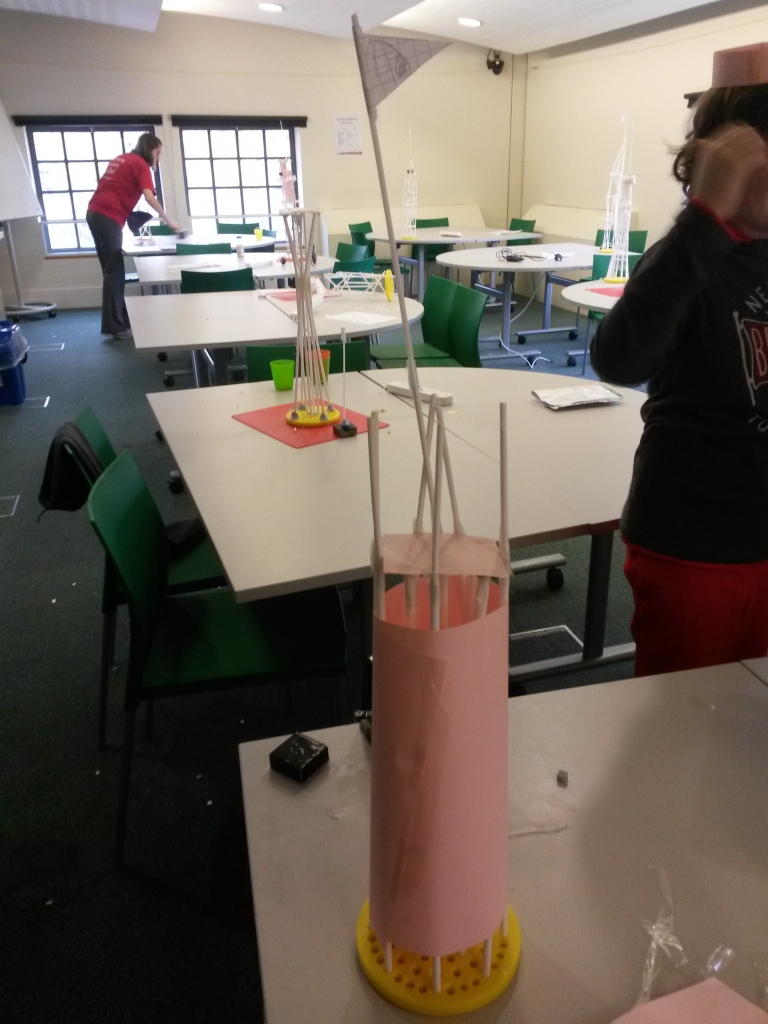
We did have a few problems during the challenge. It was difficult to get the straws to stand up straight because the glue was slow to dry. We didn’t budget for straws for crossbracing so our structure was weak. Some of the straws bent, which created some weak points as well. Lastly, we didn’t manage our time well, so we weren’t finished when our time ran out, but we were given an extra five minutes.
Then we stopped for lunch and had a quick look around some of the science centre. When we came back each table had a slinky to use to demonstrate seismic waves. We learnt that a Seisometer measures the pulse given off by an earthquake and picks up where it came from. Volunteers popped balloons of different sizes to demonstrate the different magnitudes on the Richter Scale. Each number on the Richter Scale indicates an earthquake which has 30 times the energy of the number before it on the scale. A very small balloon didn’t make a noise when it was popped but when a very large balloon was popped it was deafening and I felt it under my feet.
In the next talk Kathy spoke about how ground tremors can have unnatural causes, for example they can be a consequence of fracking, underground railway development, or quarrying. Quarrying is digging into the ground to collect materials (e.g. rocks) and fracking is injecting water at a high pressure into rocks to release gas for people to use as energy. Fracking is extremely controversial because of concerns it could cause tremors and pollution. In the UK, fracking has only started to be used recently and is being monitored. The UK doesn’t get a lot of big earthquakes and the only earthquake-resistant buildings here are nuclear power plants. This is because engineers have to consider the likelihood and the consequences of an earthquake on the buildings they are designing.
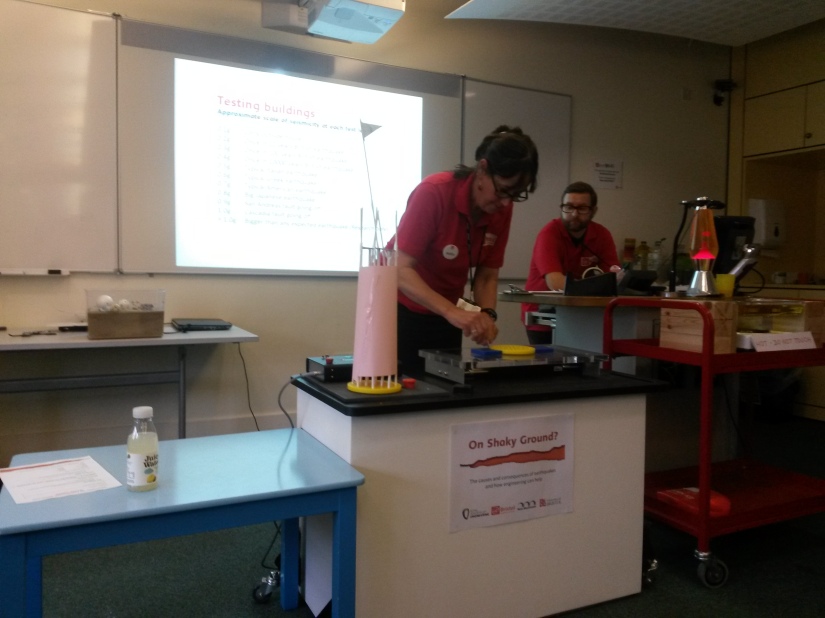
Finally we tested our water towers on the earthquake simulator which is a table that shakes and has different settings for magnitude using the G scale (engineers prefer to use the gravity scale to the Richter scale). Our team managed to pass the first two levels but fell on the third (0.3G). Another team managed to get past the conditions of a typical Japanese earthquake. Their tower was built similarly to the Eiffel Tower with a wide base coming to a point and had lots of crossbracing. Instead of resting their weight on the top they had it hanging down the centre.
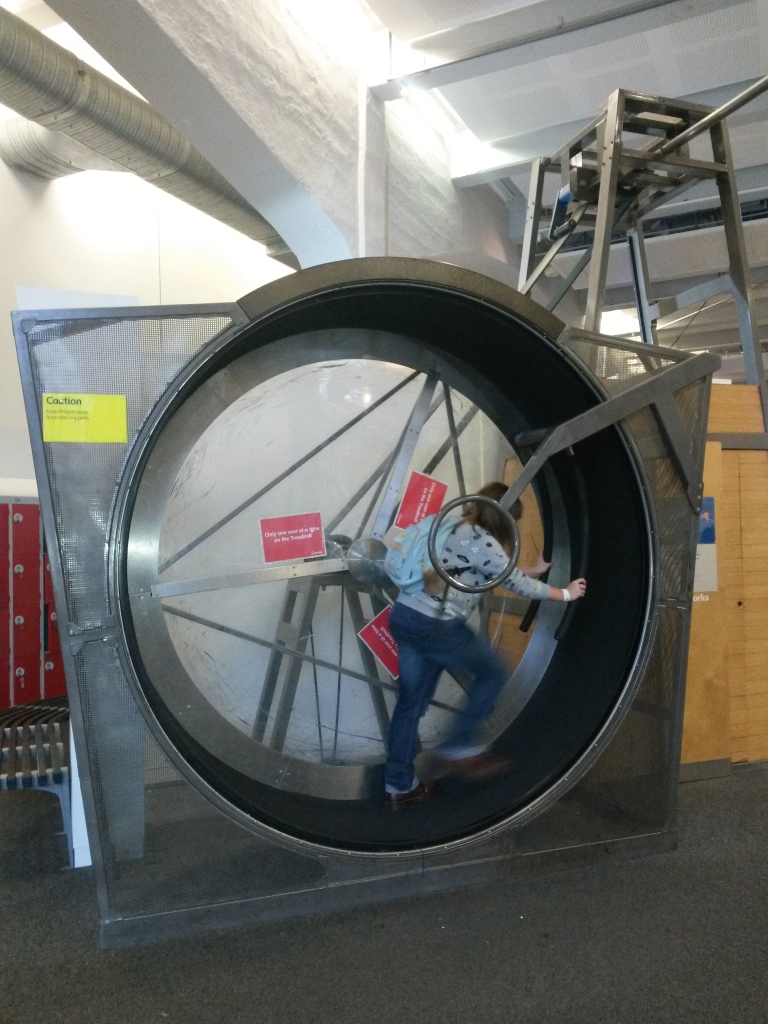

I really enjoyed the On Shaky Ground event and we learned a lot. Afterwards we had two hours to spare so we had a better look around At-Bristol. I went on a giant hamster wheel that generated power to lift water in buckets. We played games to test our reflexes, measured our heart rates and tested our startle reflex. J had a long talk about the chemical structure of water and about antibiotic resistance with Lisa from the Live science team (team Twitter). Our wristbands had barcodes on them that allowed us to save our results. There was a lot more that we looked at and more we didn’t see because we had so little time left but we are planning to go back again soon. At the end we went through the gift shop and J got a pot of Thinking Putty and I got a couple of Banksy postcards. We also looked at the statues and saw a small amount of a fireworks display in Millennium Square.
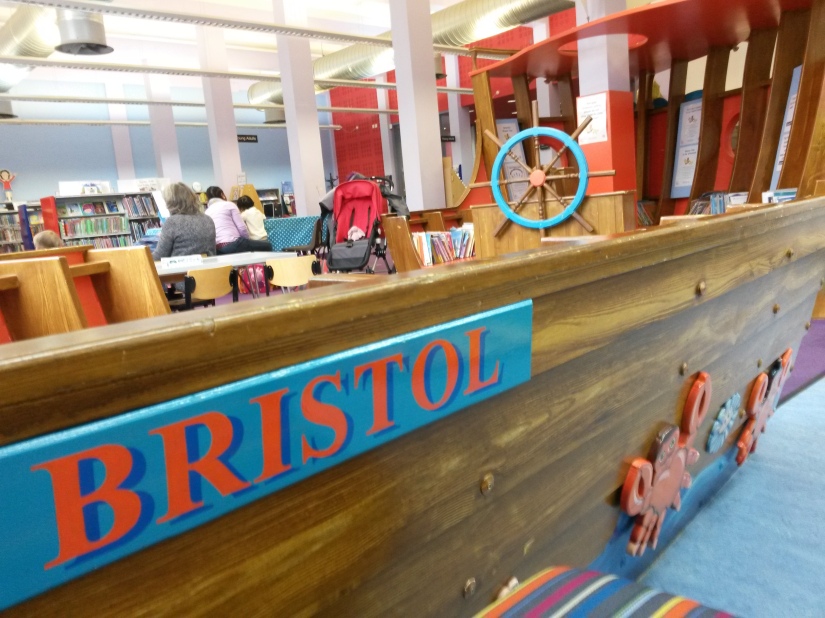
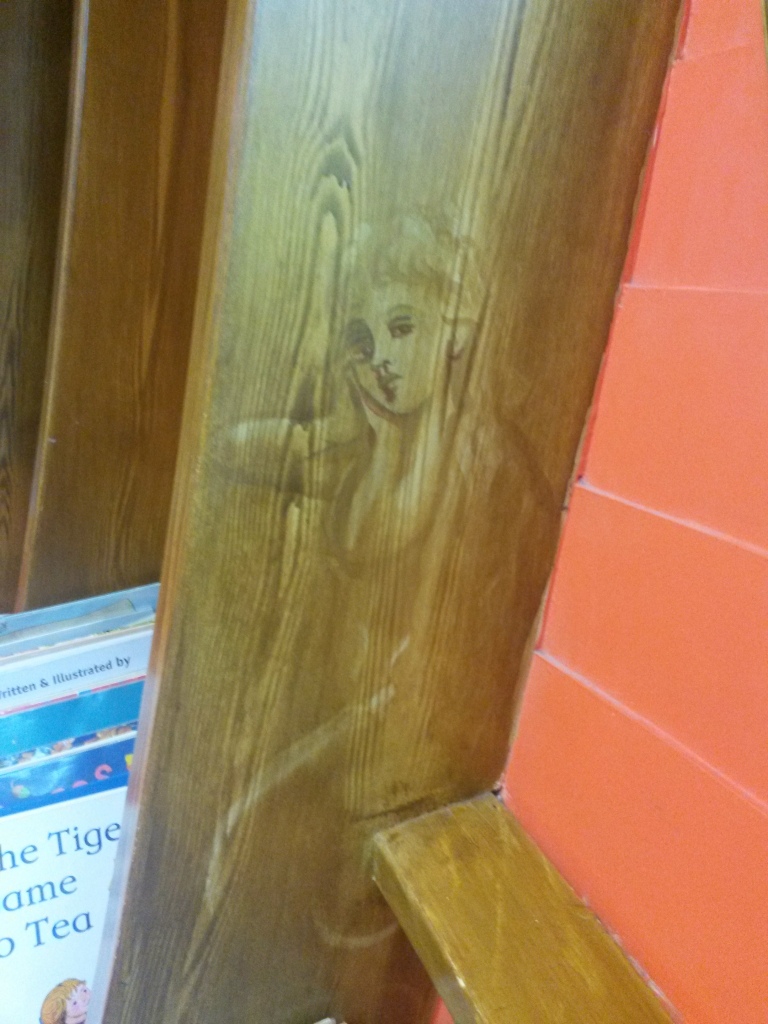
Before we came back to Plymouth we paid a visit to Bristol Central Library which was huge and had a large kids and young adult’s section, and while we were there I read some of the manga Nisekoi. We walked through College Green and visited Park Street where I bought some Posca markers, Promarkers and Essdee Softcut (for lino printing) from Cass Art. Cass Art is a huge art shop with two floors and a big selection of pens and other equipment. I have started trying lino printing recently and it is quite good timing because this half term we are doing printing at NA&DSC and at one of my home ed groups.

We also visited some of my cousins for dinner and to catch up. My uncle in Bristol is a graphic designer and we looked at some of each other’s recent work. I showed him all my Inktober drawings and he showed me his custom painted shoes and a mural he has painted on my cousin’s bedroom wall. Unfortunately I wasn’t able to go to Bristol Museum or any galleries because I got sick, but I did get to see a lot of graffiti from the car window and one of our friends has promised to take me to see more next time I’m in Bristol, which hopefully will be soon!
